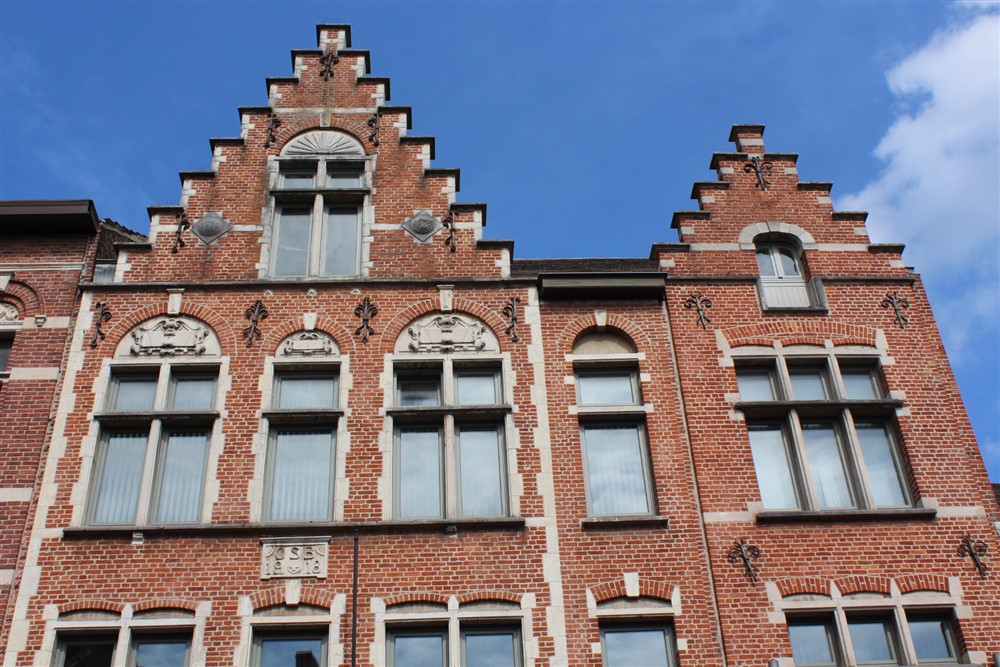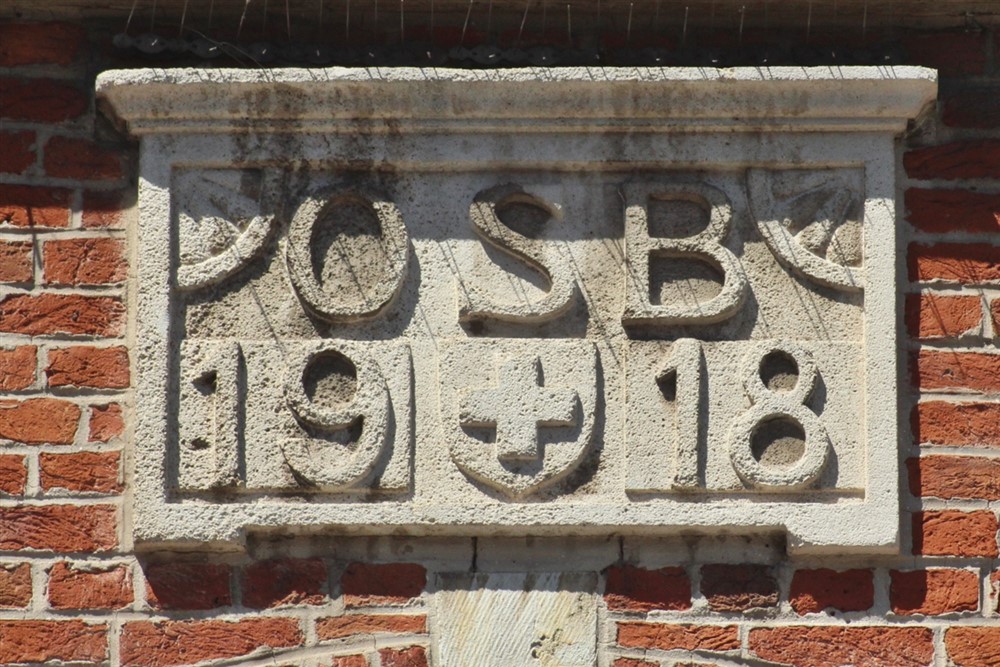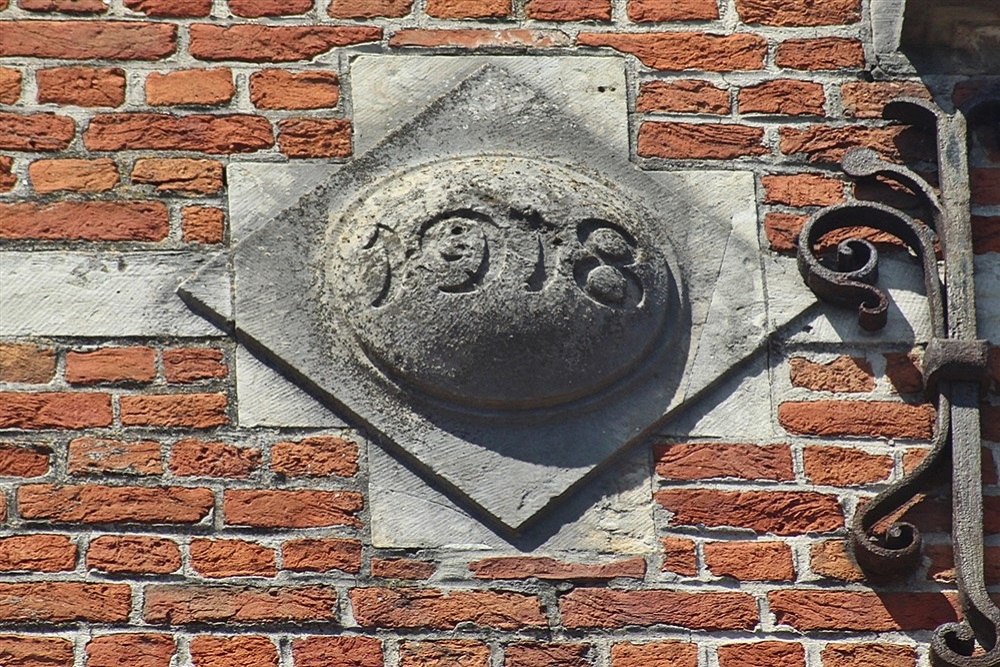OSB House Uytterhoeven Aarschot
In the middle of the facade of the house at 26 Bogaardenstraat, Aarschot is a stone with the inscription "OSB 19 18". Between the numbers 19 and 18 there is a shield with a cross. The letters "OSB" stand for Oeuvre Suisse and Belgique. The cross is that of the Swiss flag. "1918" represents the year in which the house was built.
As early as 1915, in full war, Aarschot had a plan ready to rebuild the city after the destruction by the Germans. However, construction was hardly done. Many lacked the means. But there was also uncertainty about the building lines and the conditions for obtaining compensation after the war.
A special support for the reconstruction was taken by the Swiss OSB committee. This committee had been active in Belgium since 1916. The foundation collected money from its compatriots and at the end of its existence in 1920, the Swiss would have given aid for about 500,000 Swiss francs. It is special that the OSB was admitted so quickly by the German government, while other neutral countries such as Sweden were not allowed to provide aid. We can probably find the reason in the book Belgien, Eindrücke eines Neutralen, written by Eugen Probst, the founder of the OSB, in 1915 after only a few tours in Belgium. In this report, Probst echoes the German argument that the destruction was to blame for the Belgians' unyielding attitude.
Not everyone was able to benefit from the assistance from the OSB. For example, there was a condition that the houses must be solid and artistic, and the owner still had to repay half of the subsidized amount. Only citizens in better shape, such as the trader-master painter Alfons Uytterhoeven, had the opportunity to enjoy the fund. At a time when the last German offensive in France had stalled and the Allies had successfully launched the counteroffensive, Uytterhoeven would submit his planning application on August 3, 1918. The architects who worked for the OSB were usually Belgians. Arthur Pladet, the architect who designed the general plan for the reconstruction of Aarschot in 1915, was responsible for this house.
Do you have more information about this location? Inform us!
Source
- Text: Jan Rymenams
- Photos: Jan Rymenams
Nearby
Museum
- Stedelijk Museum, Room "War and destruction" Aarschot - Aarschot
- Allied Forces Museum Herselt - Herselt
- House of the Franco-Belgian Resistance - Tielt-Winge
Point of interest
- Grote Markt Aarschot - Aarschot
- Glass Window Church Of Our Lady Aarschot - Aarschot
- Peace Carillon Aarschot - Aarschot
Monument
- Sculpture Father Jozef Raskin Aarschot - Aarschot
- Memorial Stone Anna Persy Aarschot - Aarschot
- Memorial Lucien Meyer Aarschot - Aarschot
Cemetery
- Belgian War Graves Aarschot - Aarschot
- Belgian Graves Veterans Aarschot - Aarschot
- Commonwealth War Graves Langdorp - Langdorp (Aarschot)







